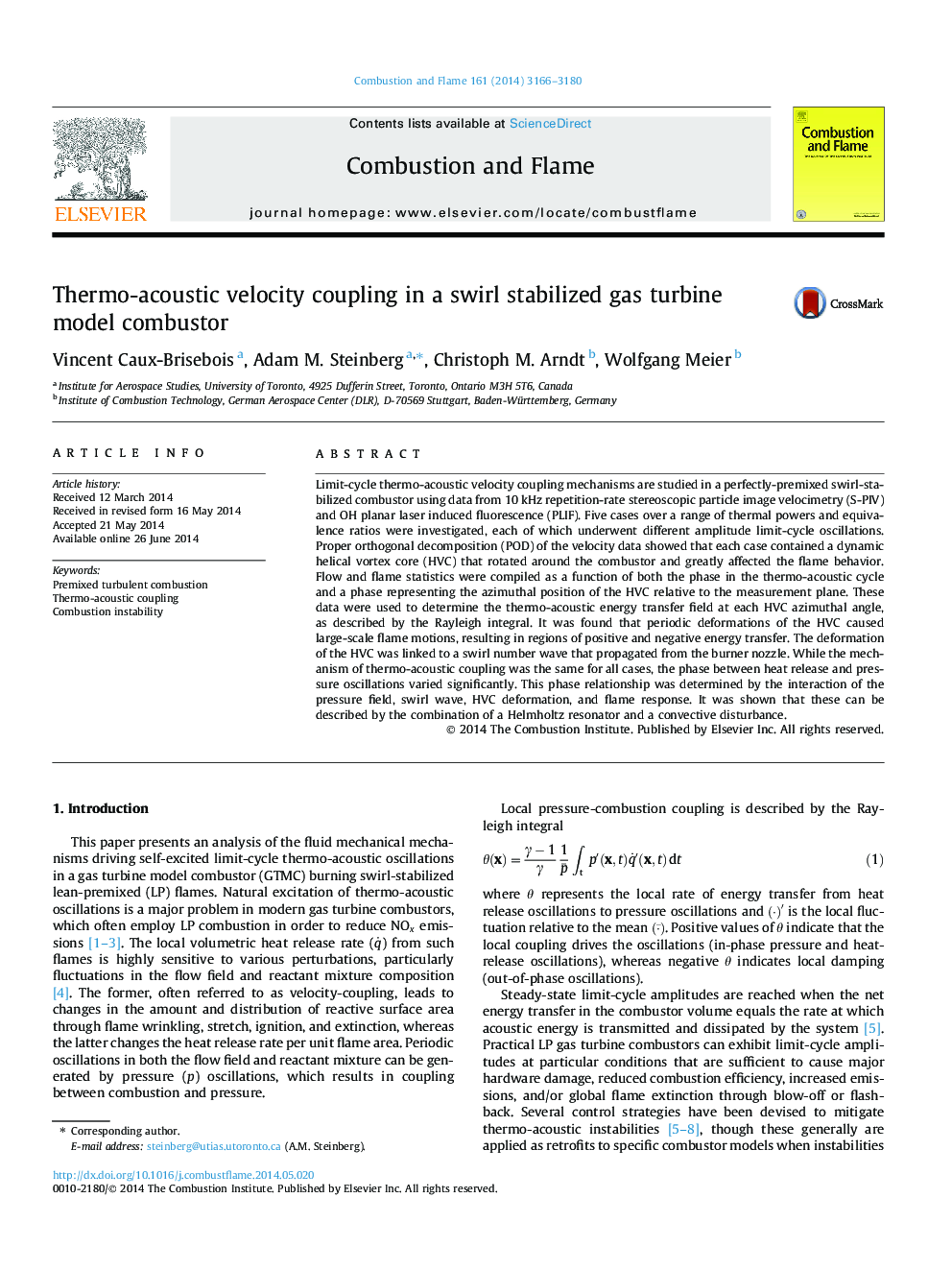| Article ID | Journal | Published Year | Pages | File Type |
|---|---|---|---|---|
| 10264390 | Combustion and Flame | 2014 | 15 Pages |
Abstract
Limit-cycle thermo-acoustic velocity coupling mechanisms are studied in a perfectly-premixed swirl-stabilized combustor using data from 10Â kHz repetition-rate stereoscopic particle image velocimetry (S-PIV) and OH planar laser induced fluorescence (PLIF). Five cases over a range of thermal powers and equivalence ratios were investigated, each of which underwent different amplitude limit-cycle oscillations. Proper orthogonal decomposition (POD) of the velocity data showed that each case contained a dynamic helical vortex core (HVC) that rotated around the combustor and greatly affected the flame behavior. Flow and flame statistics were compiled as a function of both the phase in the thermo-acoustic cycle and a phase representing the azimuthal position of the HVC relative to the measurement plane. These data were used to determine the thermo-acoustic energy transfer field at each HVC azimuthal angle, as described by the Rayleigh integral. It was found that periodic deformations of the HVC caused large-scale flame motions, resulting in regions of positive and negative energy transfer. The deformation of the HVC was linked to a swirl number wave that propagated from the burner nozzle. While the mechanism of thermo-acoustic coupling was the same for all cases, the phase between heat release and pressure oscillations varied significantly. This phase relationship was determined by the interaction of the pressure field, swirl wave, HVC deformation, and flame response. It was shown that these can be described by the combination of a Helmholtz resonator and a convective disturbance.
Related Topics
Physical Sciences and Engineering
Chemical Engineering
Chemical Engineering (General)
Authors
Vincent Caux-Brisebois, Adam M. Steinberg, Christoph M. Arndt, Wolfgang Meier,
